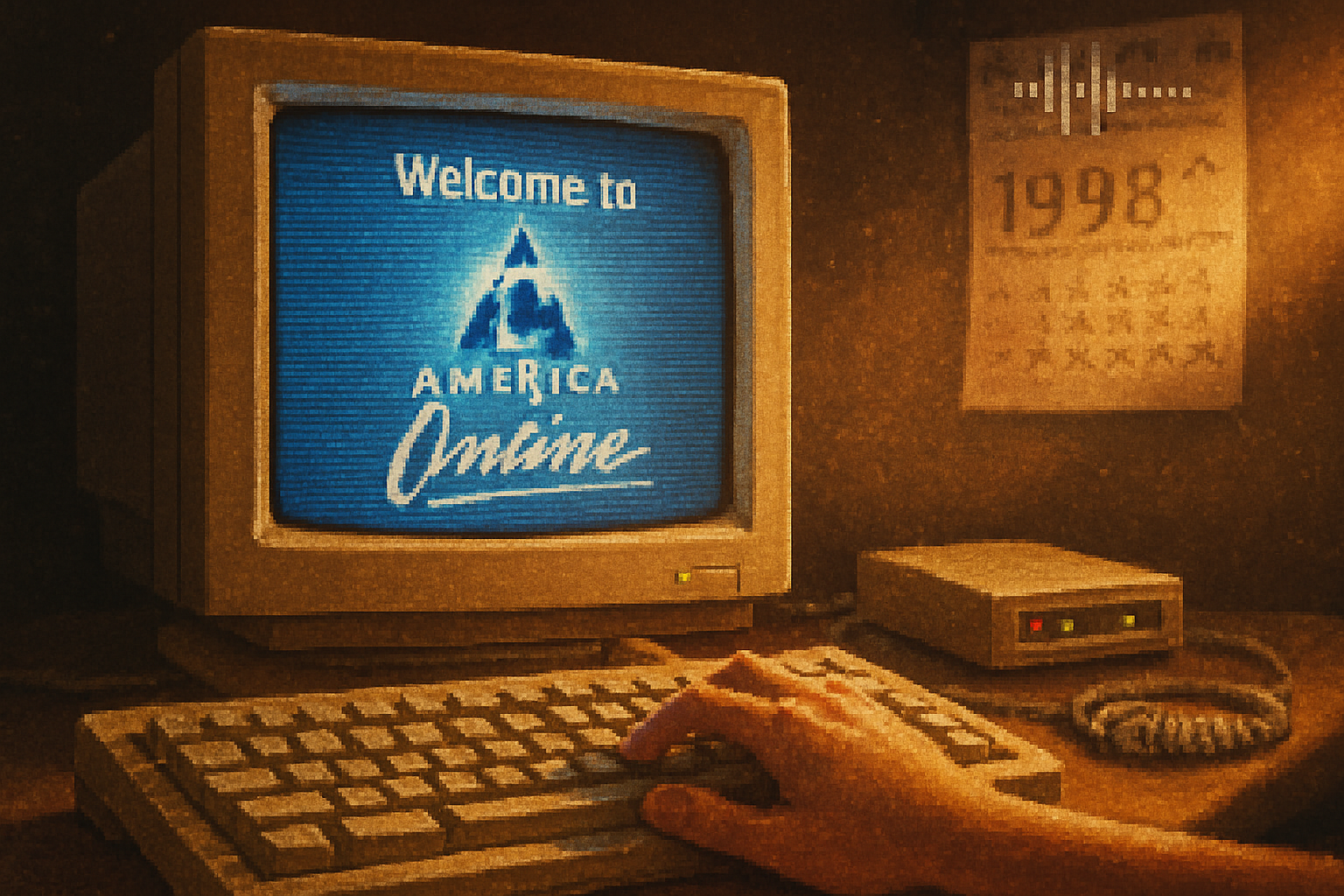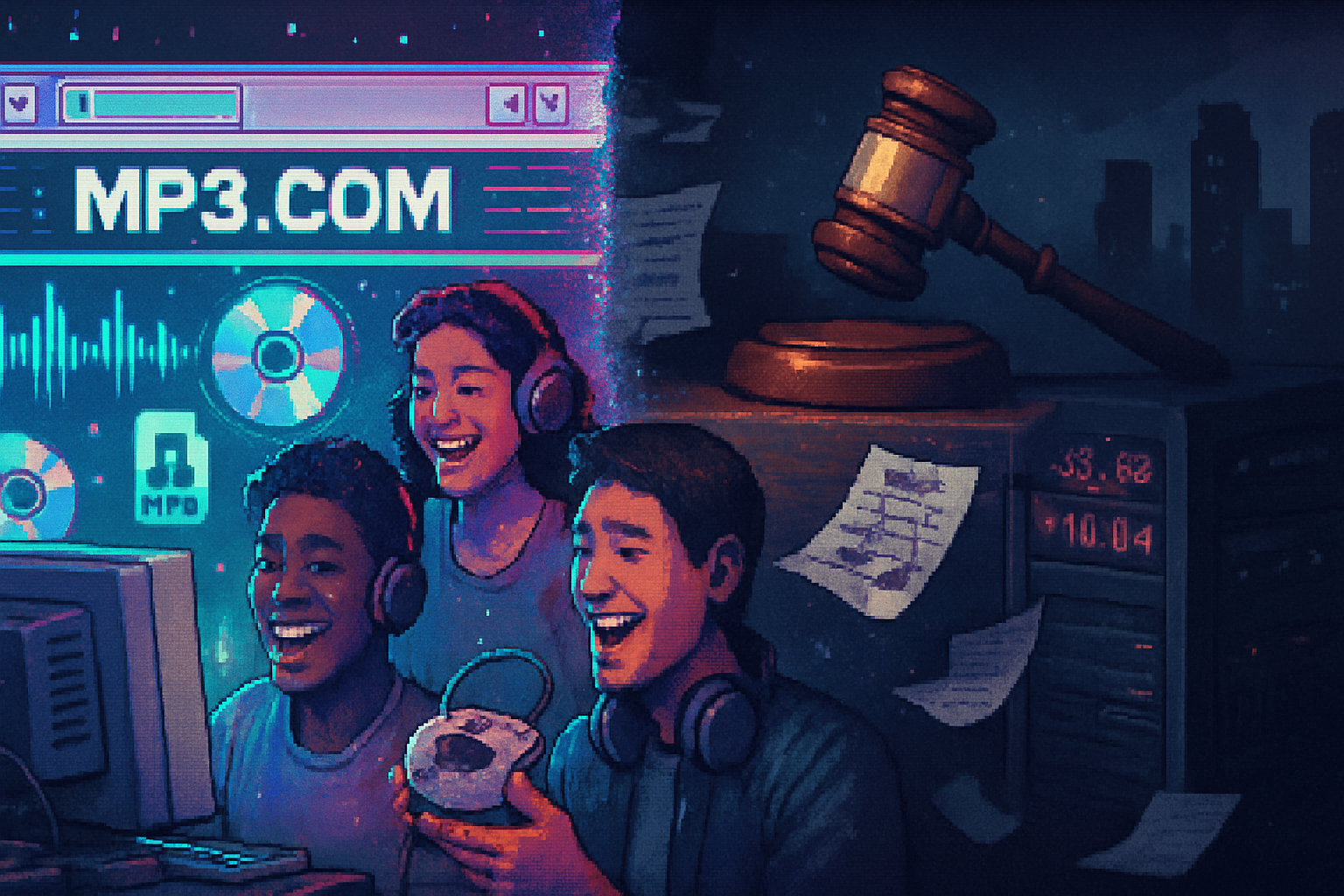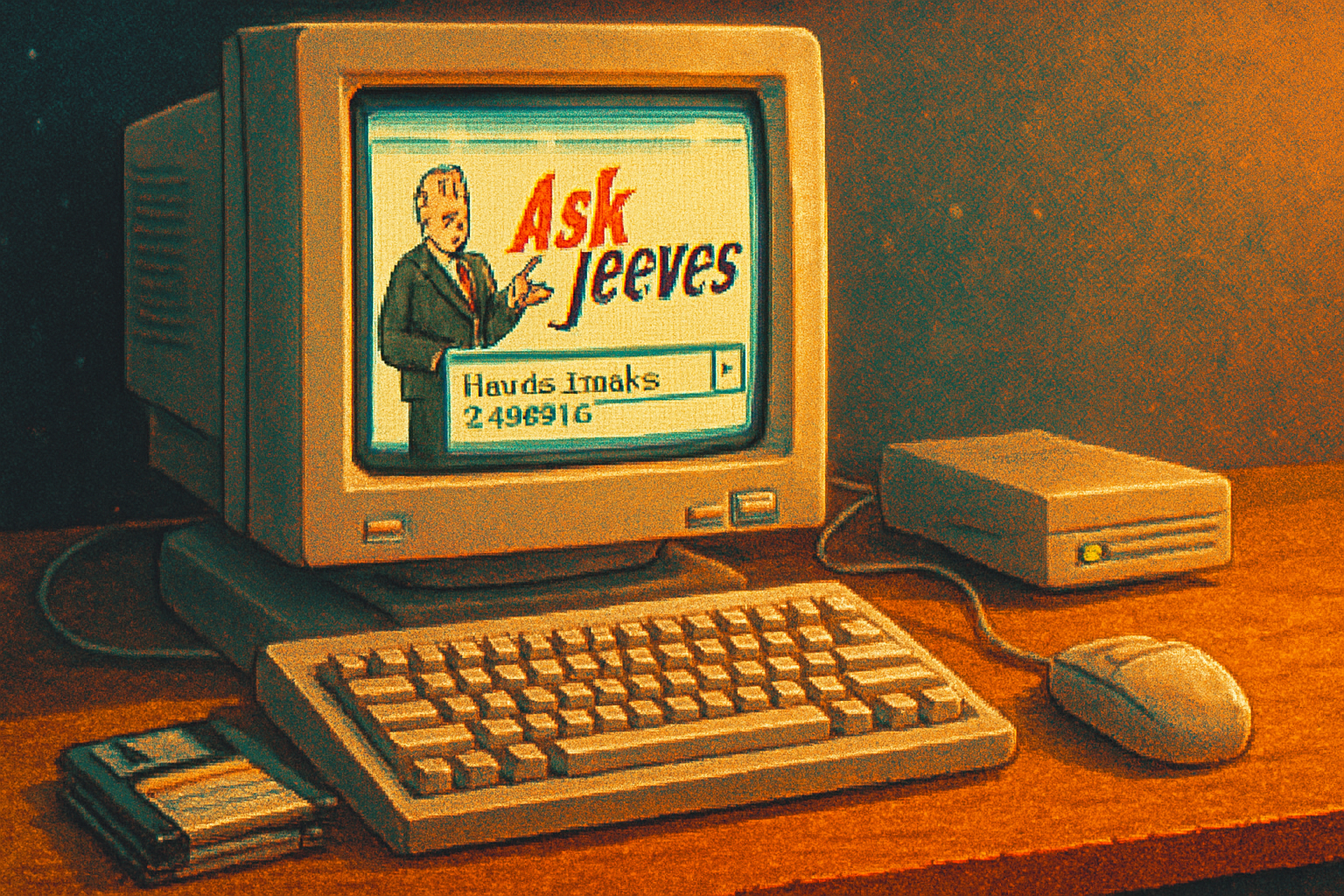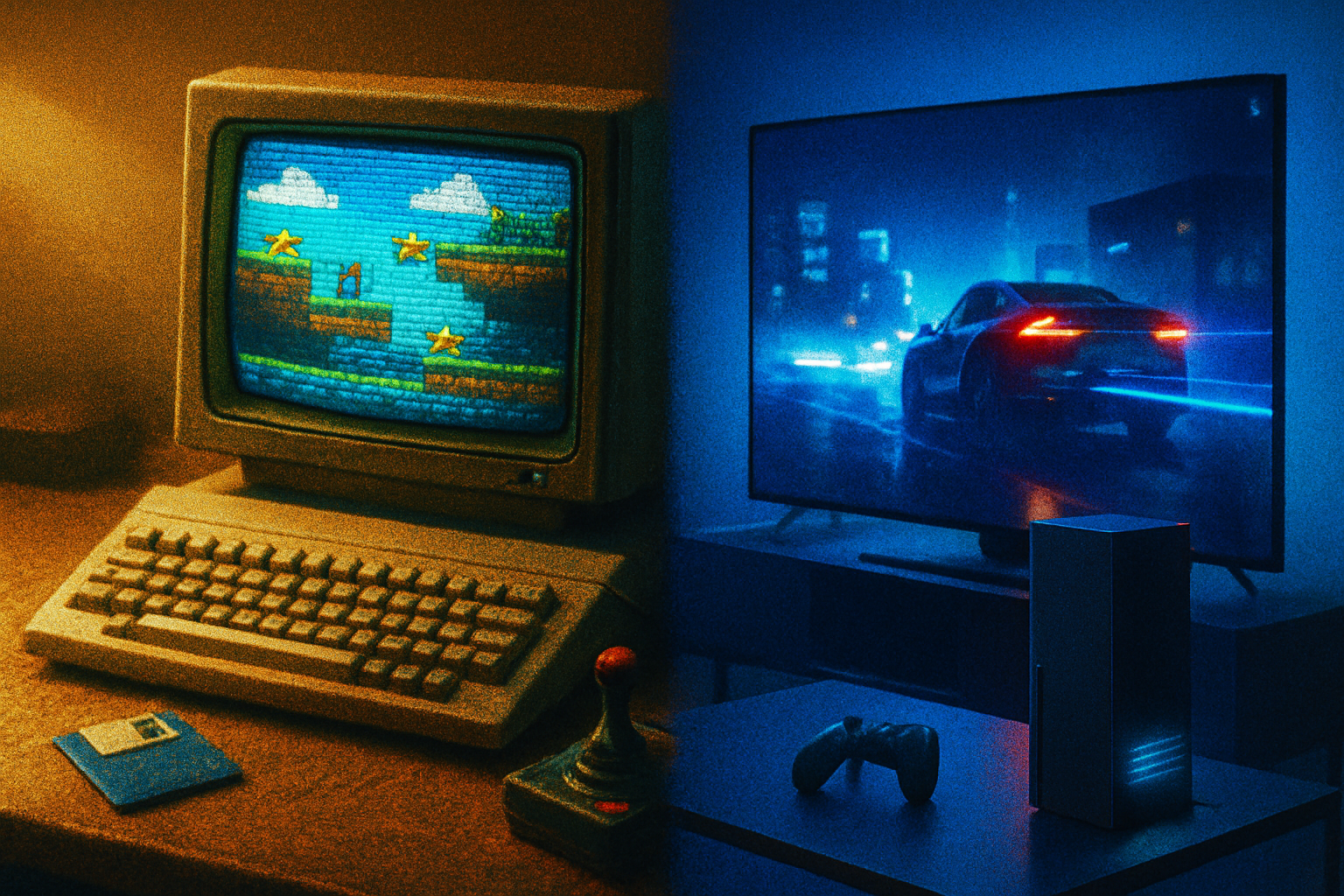· retrotech · 7 min read
The Evolution of Sound: How Windows Media Player Shaped Our Music Experience
A look back at how classic versions of Windows Media Player helped move music from discs to digital libraries, the nostalgic features that hooked users, and what today’s streaming platforms could borrow to create richer, more personal listening experiences.
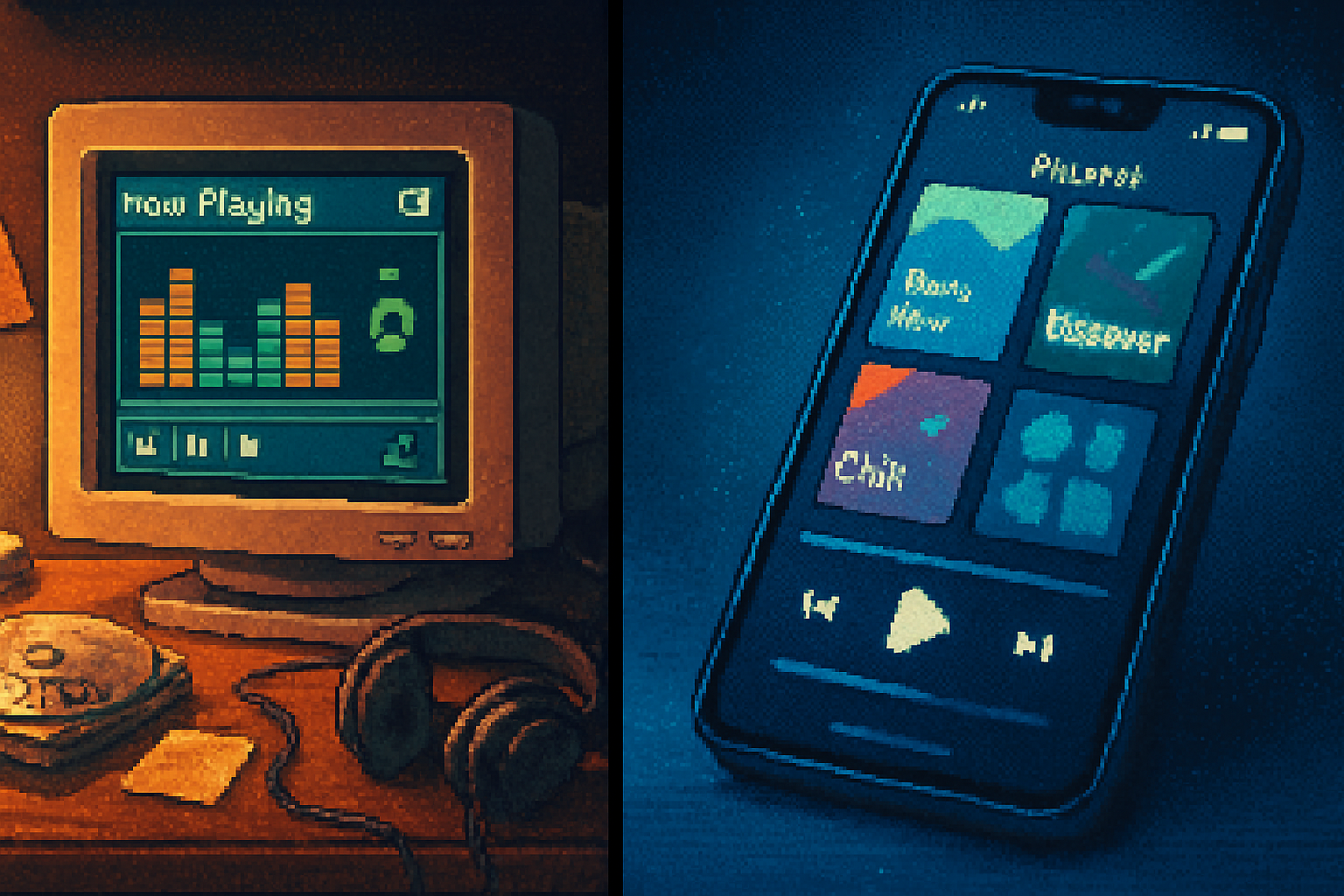
Introduction
At the turn of the 21st century music was in transition. Physical CDs and mixtapes were still common, but MP3s, ripping software and digital libraries were quietly reshaping how we discovered, collected and listened to music. Microsoft’s Windows Media Player (WMP) - for many the default audio app on Windows PCs - played a surprisingly large role in that shift. It was less glamorous than the iPod or Napster headlines, but for millions WMP was the daily interface to their fledgling digital music collections.
This article explores how classic versions of Windows Media Player revolutionized music consumption in the early 2000s, highlights the features that created deep user attachment, compares WMP with modern streaming services, and suggests what contemporary platforms could learn from those early experiences.
The scene in the early 2000s: Why WMP mattered
The early 2000s were a messy, creative era for digital music: CD ripping (turning discs into files), peer-to-peer sharing, multiple audio formats (MP3, WMA), and a growing ecosystem of portable players. Many consumers didn’t want a brand-new ecosystem - they wanted a simple place to manage music they owned. Windows Media Player provided that place.
Key reasons WMP mattered then:
- It came preinstalled on millions of Windows PCs, lowering the barrier to entry.
- It bundled ripping, burning, playback and device sync into one app.
- It introduced features that made large personal music libraries navigable - metadata, album art, playlists and smart views.
If iTunes was the polished boutique for the MP3 era, Windows Media Player was the ubiquitous appliance - reliable, integrated with Windows, and often the first program people met when they plugged a new MP3 player in.
The features that pulled users in (and why they mattered)
WMP’s appeal was a mix of practical functionality and small, delightful touches that made music feel personal.
Library-first organization
- WMP emphasized building and organizing a local library - artists, albums, genres and playlists. For users moving from shelves of CDs to folders of files, this model provided a familiar mental map.
Drag-and-drop playlist creation
- Making a playlist was tactile and immediate - drag tracks, reorder, save. That low-friction creative act recreated the mixtape ritual in a digital form.
Ripping and burning
- WMP integrated high-quality CD ripping (including bitrate selection and format choice) and burning. For many users, the app was the tool that turned physical collections into portable digital ones.
Portable device sync
- WMP’s sync wizards and later MTP support made moving music to MP3 players and later Windows Mobile devices easier. Syncing bridged desktop libraries and on-the-go listening.
Visualizations and “Now Playing”
- Visualizations (the mesmerizing waves and patterns) and the Now Playing interface gave music a visual personality. They weren’t functionally necessary, but they made listening feel like an event.
Skins and customization
- Many versions supported skins or different view modes, allowing users to give their player an aesthetic that matched their personality or desktop.
Metadata and album art management
- WMP allowed users to edit tags and add album art, which made libraries look neat and professional - especially important when an album’s packaging was a key part of the experience.
Local control and perceived ownership
- You owned the files. There was a directness to being able to keep, move, copy and back up music files that streaming often obscured.
Some features also had downsides (for example, early digital rights management systems tied to the Windows Media format restricted usage), but overall WMP made digital music approachable for mainstream users.
Windows Media Player vs. modern streaming services: a comparison
Streaming services like Spotify, Apple Music and YouTube Music represent the dominant paradigm today: vast catalogs available on demand, algorithmic discovery and seamless cross-device playback. How do these modern experiences compare to the classic WMP era?
Catalog and access
- Then - Local libraries were finite - what you had was what you owned or could rip. Discovery happened through radio, friends, or burning through an artist’s discography.
- Now - Near-infinite catalogs remove scarcity; anything you want is usually a few taps away.
Ownership vs. access
- Then - Users owned files (MP3/WMA) and had full file control. Files could be copied, backed up and burned.
- Now - Users mostly access streams under license agreements. Offline downloads are common but often locked behind apps and DRM.
Personalization and discovery
- Then - Playlists and rules were user-driven. Smart playlists could automate some organization but discovery was manual.
- Now - Sophisticated recommendation algorithms surface new music, tailored playlists and daily mixes - discovery is proactive and largely automated.
Social sharing and collaborative features
- Then - Sharing was physical (mix CDs) or file-sharing. WMP itself wasn’t built for social interactions around music.
- Now - Collaborative playlists, shared libraries, social integrations and ephemeral stories make music a social medium.
Visual and tactile experience
- Then - Visualizers and skins made the player feel personal and tangible.
- Now - UIs prioritize simplicity and consistency; visual flourishes are rarer, replaced by cover-art-driven layouts and waveform previews.
Both eras have trade-offs. Streaming prioritizes convenience, breadth and discovery, while classic WMP prioritized control, tactile rituals and local curation.
Why nostalgia for WMP persists
Nostalgia around WMP isn’t just about the interface; it’s about rituals and agency:
- The ritual of ripping a new CD and waiting for the progress bar felt like converting a physical memory into a portable one.
- Creating a mixtape (now a playlist) required intent and curation - you chose sequence and pacing.
- Visualizations and skins made music listening an aesthetic event, not just background noise.
- The desktop-first listening experience anchored music to particular places and practices - the computer, the home stereo, the burned CD.
Those rituals created memories that streaming’s frictionless convenience can’t always replicate.
Lessons modern platforms can learn from classic WMP
Streaming platforms have many strengths, but they could borrow several ideas from the WMP era to strengthen user attachment and offer more meaningful experiences:
Surface ownership-like experiences
- Offer a hybrid model where users can maintain a “personal library” of files alongside streaming, with transparent download formats and fewer DRM surprises.
Bring back expressive customization
- Allow skins, themes or visualizers (opt-in) so users can make the app feel personal rather than generic.
Reintroduce tactile playlist tools
- Make playlist creation more tactile - drag-and-drop sequencing, timeline views for pacing, and simple tools for turning playlists into shareable “mixes” with embedded artwork and liner notes.
Make metadata and curation tools accessible
- Give users better control to edit metadata, add album art, and attach notes to tracks - turning playlists into curated artifacts.
Preserve ritual
- Features like “mix CD mode” (a curated export for gifting), or an album-space that recreates the act of listening to a record from start to finish, help preserve meaningful listening rituals.
Offer richer offline ownership options
- Let subscribers export purchased high-quality files (where licensing permits) or provide clear, user-friendly ways to back up personal libraries.
Reintroduce playful visual engagement
- Dynamic visualizers and ambient visual modes for parties or focused listening could make music feel more present.
Transparency around algorithms
- Combine algorithmic discovery with tools that let users see why a track was recommended and adjust those signals.
A pragmatic future: hybrid-first music experiences
The best future model could be hybrid: streaming’s catalog and discovery combined with local-first controls and richer personalization. Imagine a listening app that:
- Streams a vast catalog on demand,
- Keeps a synced local library users can export and back up,
- Lets users design and theme their player and playlists,
- Encourages ritualized listening with album-first modes and shareable, downloadable “mixes.
That future would capture the convenience of modern platforms while restoring some of the agency and intimacy that made early music apps like WMP so emotionally resonant.
Conclusion
Windows Media Player was never the flashiest product in the history of digital music, but it quietly shaped how millions of people approached music: as a library to curate, a set of files to control, and an experience to personalize. Modern streaming services have solved problems WMP never could have dreamed of - scale, discovery and cross-device continuity - but in doing so they left behind rituals and forms of personal expression that mattered.
Designers of music platforms today have an opportunity: blend streaming’s strengths with the tactile, ownership-oriented features of classic players. Doing so would not only serve nostalgia - it could help build deeper, more lasting relationships between listeners and the music they love.
References & further reading
- Windows Media Player - Wikipedia: https://en.wikipedia.org/wiki/Windows_Media_Player
- Spotify - Wikipedia (history of streaming platforms): https://en.wikipedia.org/wiki/Spotify
- RIAA (recording industry trends and digital transition): https://www.riaa.com
